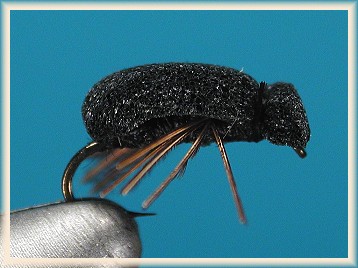|
Far too often we think about trout fishing as
a matter of matching an aquatic hatch and nothing
else. However, there are many instances where the
trout are feeding on other insects, even when an
aquatic insect hatch is occurring. It is very easy
to fall into this trap, and far too often, we miss
the best fishing of the day because we were in too
much of a hurry to start fishing to pay attention
to what was going on in the water.
Warmwater fishermen are well aware of the productivity
of beetles and other non-aquatic insects as they
pertain to flyfishing. They know that fish will
feed heavily on any insect that is abundantly on
and in the water. In fact, some of their best
fishing days come from those hatches and the fish
that feed heavily on them.
About five years ago I asked the (then) editor of
a popular fly tying magazine what his favorite trout
fly was. I was expecting to hear something like an
Adams or Elk Hair Caddis, but he said it was a
simple foam beetle. He said fish would feed on
that beetle whether there was a hatch or not, and
often his catches were better on the beetle than
on a fly designed to match the hatch of the day.
His theory was that beetles were always falling
in the water, while aquatic insects only hatch
at certain times of the day. It was interesting
enough to stick in my mind.
So here we are again, looking for a simple fly that
takes only a very few materials to tie, and that
is an effective fish catcher. While I was thinking
about what to tie next, that conversation popped
into my mind. Of course, why not tie a black
beetle? It is hard to get much simpler, and very
hard to get more effective on a variety of fish.
It will work for anything from bluegills to trout
to carp. And, it floats like the floatation foam
it is made of.
Too Simple Black Beetle Materials List:
- Hook - Any standard dry fly hook,
even cheap ones will do. I'm using a size 16
Mustad 94840 dry fly hook.
- Tail - None.
- Body - Black closed cell craft foam.
- Legs - Pheasant tail fibers, clipped.
- Thread - 6/0 - Black.
Tying steps TS Black Beetle:
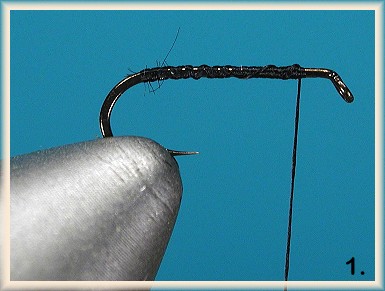
1. Start the thread.
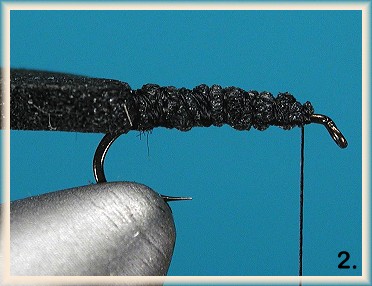
2. Secure a thin (1/4 to 1/8 inch wide) strip
of black craft foam to the hook.
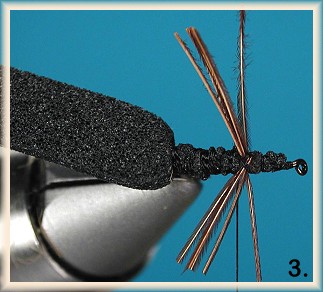
3. Secure a small group of pheasant tail
fibers to the hook using figure 8 wraps. Trim
the fibers to length on both sides of the hook.
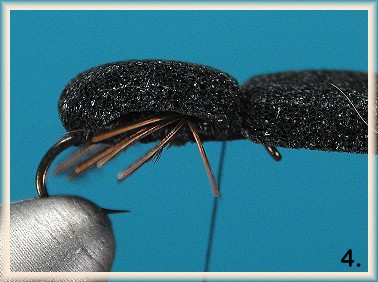
4. Pull the foam over the back and legs
and secure it with a few thread wraps behind
the hook eye.
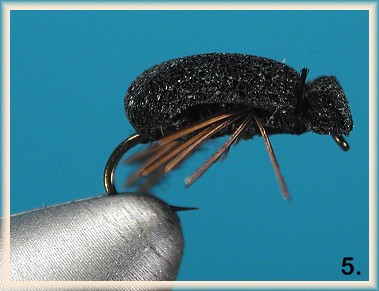
5. Trim the foam at the hook eye, whip
finish, and cement the head.
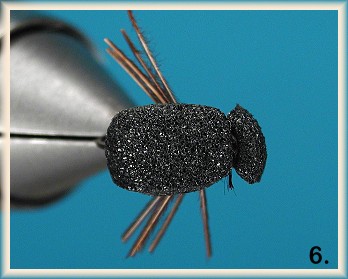
6. From the top, your beetle should look like this.
It just doesn't get much more simple than that.
You can modify this fly by tying it in larger
sizes and different colors. Need a lady bug?
They do make nail polish for that task. It is
a simple fly that simply catches fish. Who
could ask for anything more?
~ AC
|

